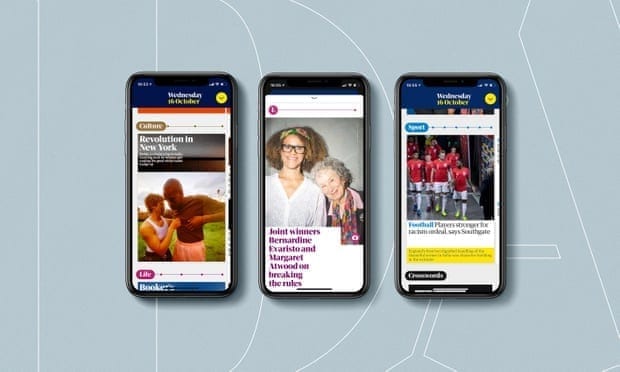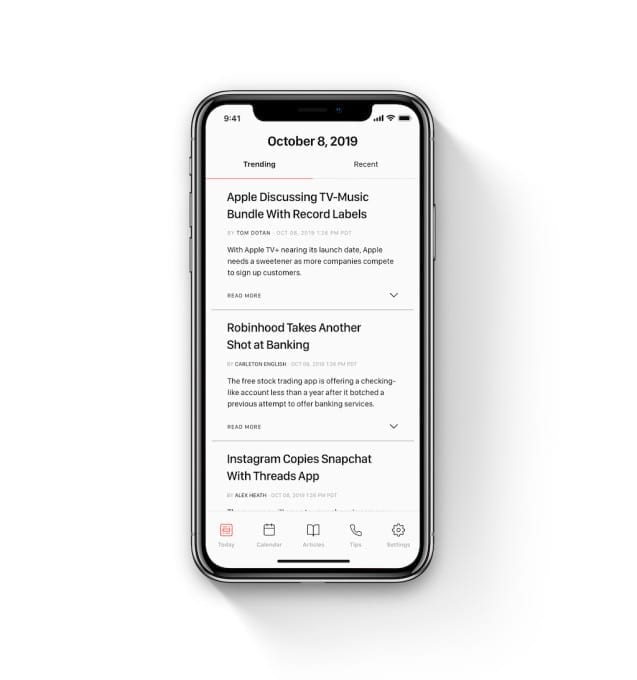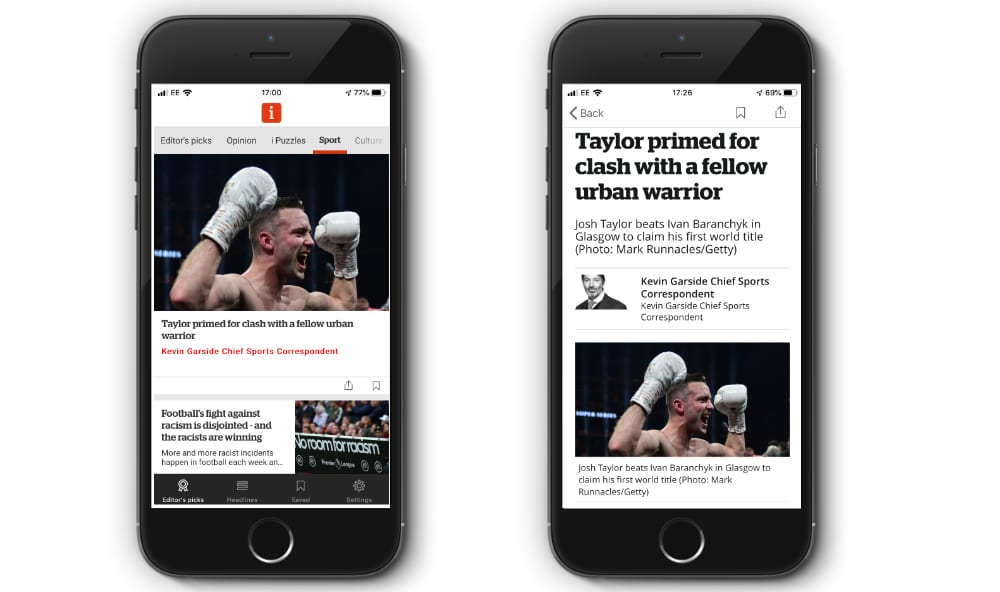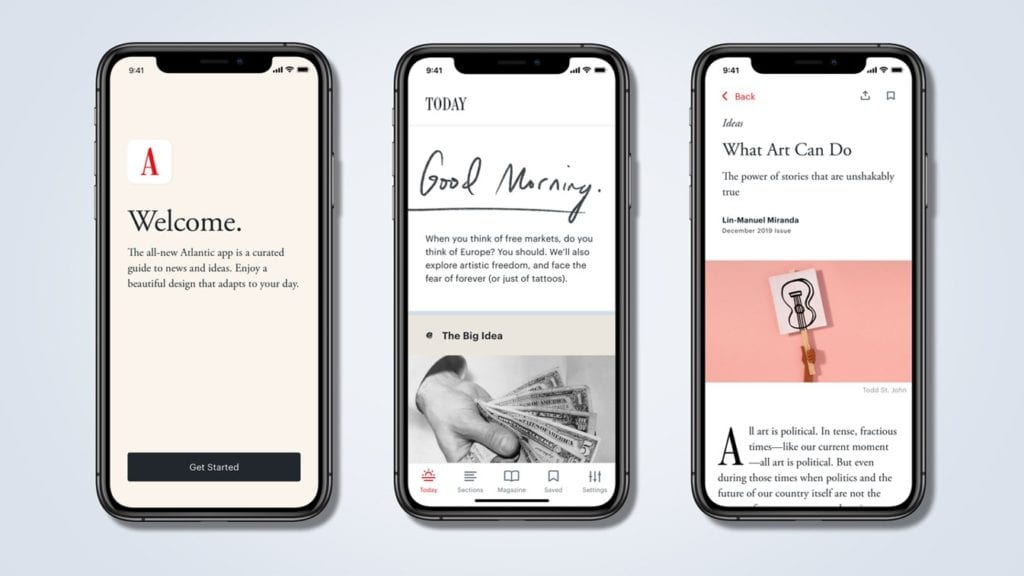As publishers return to apps, are audiences finally prepared to pay?
As publishers return to apps, are audiences finally prepared to pay?on Nov 20, 2019

Four weeks of launches
First up in this flurry of apps was The Guardian, who released a subscriber-only ad-free daily app on 17th October. The ‘more streamlined news product’ lets users scroll horizontally through the paper’s sections.



Audience value
There are a number of reasons behind this re-focusing on apps, and why the timing is so interesting. Firstly, it has come with an acceptance that apps are never going to achieve the same scale as publisher websites. So instead, they’re being used to identify and add value for the most loyal subscribers. Matt Skibinski, reader revenue adviser for The Lenfest Institute put it excellently when talking to Digiday about The Atlantic’s relaunch. He pointed out that publishers focus conversion efforts on the web, because more customer conversions take place on desktop than on mobile. But because more consumption happens on mobile, apps are a great opportunity to increase loyalty. “An app like this might help with conversion, but it’s really a retention play,” he said. Building a habit – and subsequently engagement – is vital for publishers who are developing reader revenue streams. Indeed, it could be argued that the industry’s swing to reader revenue has given apps a new lease of life. Jonny Kaldor, Co-Founder and CEO of publisher app provider Pugpig, says that this has been reflected in the statistics their clients see about engagement. “Engagement in apps is significantly higher than what can be achieved on the web,” he said, explaining that the apps they build for publishers “show an average session duration of over 20 minutes, with readers opening these apps 13.5 days every month.” “While apps find it difficult to acquire new readers, they’re extremely effective at driving up reader engagement, and having a material impact on the average revenue per user.” Some have suggested that Apple’s move to try and get people paying for news with Apple News+ is partly responsible for this influx of paid apps. Whether it’s the thought of a tech giant hoovering up yet more revenue, or whether it’s a hope that people will now pay for app content spurring publishers on, these will undoubtedly not be the last launches of this kind that we see. But there’s another factor which deserves mention, and that is that these publishers have finally got to grips with digital; how people consume content on mobile and around their daily lives, rather than being shackled to a print-to-digital conversion mindset.Revisiting editions
Understanding digital behaviour has driven another common theme between these apps which may seem counterintuitive at first glance: the edition. The idea of releasing digital content in editions was pioneered by The Times when they dropped rolling news for four editions a day across their digital properties in 2016. They said at the time that an edition-based publishing model reflected their readers’ daily routines, and allowed their journalists to produce ‘more considered work’ than they could on a rolling deadline. Timed content drops were also a stand-out feature for The Pool when it was still publishing, based on surveying women about how and when they wanted to read their content. Many in the industry raised their eyebrows at the prospect of returning to editions when The Times announced their plans. After all, an edition is something you put together when limited by print. Without being restricted by print runs and delivery schedules, bundles of content make no sense. But, faced by an overwhelming amount of content continuously streaming out of newsrooms, it seems readers are craving structure again.“The experience of reading news on the internet (especially if you’re getting it through social media) is, honestly, bad. The constant conveyor belt of content delivers article after article, each claiming to be more important than the last. It’s pure information overload, and if you don’t have hours of free time, it’s difficult to know what’s important, what’s not, and what you can trust.” inews app launch statementThe i paper has said that its new inews app will be releasing content three times a day, at midday, 5pm and midnight, with the latest stories ready for the morning. And whereas The Guardian isn’t specifically timing the release of its content, their app will have a curated, readable quantity of content delivered each day. A common thread running through all these app launches is that audiences are overwhelmed, and want a place they can go to get reliable – and finite – news. What remains to be seen is whether they are willing to pay for it, and subsequently whether publishers can accept lower numbers as a trade for much higher engagement.
App for Readers
Apps for Publishers
Apps for Writers
Digital News Publishers News
digital publishers market



.jpg)






.jpg)

.jpg)
.jpg)
.jpg)
.jpg)
.jpg)
.jpg)

.jpg)










Sorry! No comment found for this post.